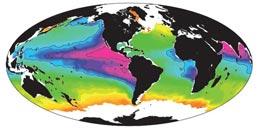 Human embryonic stem cell growing on a layer of supporting cells (fibroblasts). Micrograph by Annie Cavanagh and Dave McCarthy. (Photo From UCSC)
Human embryonic stem cell growing on a layer of supporting cells (fibroblasts). Micrograph by Annie Cavanagh and Dave McCarthy. (Photo From UCSC)From The Telegraph:
Thousands of patients could benefit from a new discovery that could widen the use of stem cells in groundbreaking medical treatments.
Research by British scientists has shown the body is more flexible in its production of stem cells than previously thought.
The discovery widens the possibilities for the use of such cells in surgical procedures for treating damaged tissue and organs.
Last week surgeons in Spain created the world's first tissue-engineered whole organ transplant using a windpipe made with the patient's own stem cells. The patient, 30-year-old mother-of-two Claudia Castillo, needed the transplant to save a lung after contracting tuberculosis. Scientists from Bristol had helped to grow the cells.
Read more ....














































